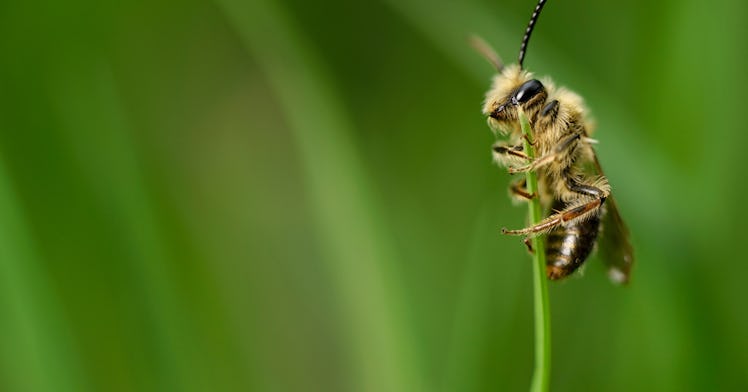Put Away the Lawnmower: ‘No Mow May’ is Here!
It's a break from your chores and a win for the environment!

Ah, spring! We all love when the cold weather of the lingering winter begins to morph into spring. The trees turn greener, the flowers bloom, our lawns revive, and our gardens require tending. For many people across the United States, it means it’s time to whip out the lawnmower. For some it might be a chore, figuring out how to work lawnmowing into our busy schedules, while for others, it’s one of the rites of passage of being a homeowner or a dad, however one identifies.
And while there’s plenty of debate as to whether or not mowing lawns is actually fun, there’s an initiative that sidesteps the question altogether, and asks regular people to keep the lawnmower in the garage for an extra month for “No Mow May.” It’s not just for people who want to sleep in on the weekends – it’s also for people who want to give the bees, a helping hand. Here’s what you need to know.
What is ‘No Mow May’?
We’ve all heard about “No Shave” November where people stop shaving their beards and mustaches to help raise awareness for prostate cancer. Well, “No Mow May” is similar except the campaign focuses on what we can do to help the bee population and ultimately help the climate.
No Mow May was started by Plantlife, an organization in the United Kingdom. And it’s spread to the U.S. where it’s spearheaded by a group called Bee City USA. The movement has people forgoing any lawn cutting for the whole month of May to help the bee population thrive.
How does ‘No Mow May’ help bees?
Plantlife cites research that found 80 percent of lawns “supported the equivalent of around 400 bees a day from the nectar sugar produced by flowers such as dandelion, white clover, and selfheal.” Additionally, 20 percent of lawns were found to support up to 4000 bees a day. That’s not a small drop in the bucket!
Those numbers are what prompted the “No Mow May” movement. “The traditional monoculture lawn lacks floral resources or nesting sites for bees and is often treated with large amounts of pesticides that harm bees and other invertebrates,” Bee City USA explains. “When we think of habitat loss, we tend to imagine bulldozers and rutted dirt, but acres of manicured lawn is as much a loss of habitat as any development site.” It may sound strange, but according to a 2005 NASA estimate, there are approximately 40 million acres of lawn in the contiguous United States. That makes up approximately 2 percent of the land and makes lawns the single largest irrigated crop that’s grown in the country.
And cutting our lawns isn’t helping the already struggling population of bees, wasps, and other pollinating insects. “All lawn flowers in the survey combined produced a colossal 23kg of nectar sugar per day,” Plantlife reports, “enough to support 2.1 million – or around 60,000 hives – of honeybees.” By giving them a chance to grow, even for a month, you could be helping bees thrive.
How can you participate in ‘No Mow May?’
There isn’t much you need to prep for in order to participate in No Mow May – in fact, all you have to do is nothing. Don’t mow your lawn for the entire month which will allow the plants the bees rely on for nectar to grow and gives the bee population ample time to get their population numbers up to a good level to sustain the rest of the season.
“The goal of No Mow May is to allow grass to grow unmown for the month of May, creating habitat and forage for early season pollinators,” Bee City USA shares. “This is particularly important in urban areas where floral resources are often limited.”
What else can you do to help the bee populations?
If you’re not able to go completely cut-free for May (like if you live in a neighborhood with a Housing Association that requires you to mow your lawn), due to weed or lawn regulations, there are a few alternatives you can keep in mind, Plantlife suggests.
“In any garden, big or small, we’d now advise keeping two lengths of grass. Leave some patches completely unmown to let taller flowers come into bloom. For the rest of the lawn, you can keep the grass shorter by mowing once every month to a height of 1 or 2 inches,” Dr. Trevor Dines, Plantlife’s Botanical Specialist, explains. “You’ll cut off some flowers when you do mow but they’ll come back quickly; you can even rotate patches around your garden so there are always some areas in flower. For flowers, bees and butterflies there is one lawn ‘haircut’ that really suits: the mohican. Most should be given a monthly cut to boost short sward plants but there should also ideally be an area set aside for longer grass where floral diversity abounds.”
Happy no-mowing!